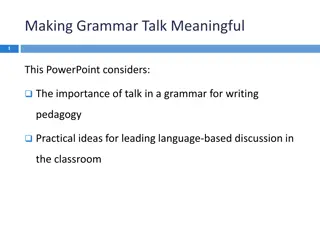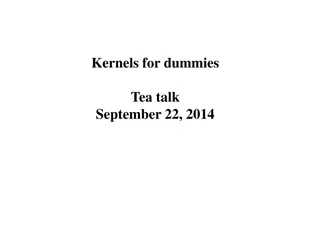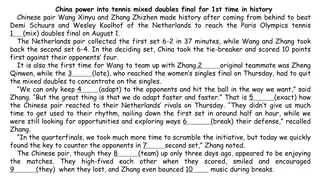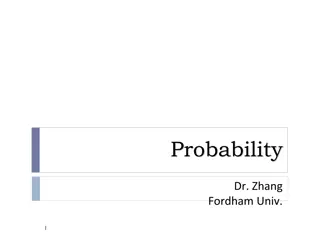
Detecting and Classifying Race Conditions in Web Applications
Explore a new method to automatically classify race conditions in web applications as harmful or harmless. Learn about the challenges of identifying race conditions, existing tools' limitations, and the contributions of the RClassify Library in detecting and categorizing these issues. Join the journey to enhance web application reliability and performance.
Download Presentation

Please find below an Image/Link to download the presentation.
The content on the website is provided AS IS for your information and personal use only. It may not be sold, licensed, or shared on other websites without obtaining consent from the author. If you encounter any issues during the download, it is possible that the publisher has removed the file from their server.
You are allowed to download the files provided on this website for personal or commercial use, subject to the condition that they are used lawfully. All files are the property of their respective owners.
The content on the website is provided AS IS for your information and personal use only. It may not be sold, licensed, or shared on other websites without obtaining consent from the author.
E N D
Presentation Transcript
Classifying Race Conditions in Web Applications Lu Zhang Chao Wang 1
Outline Overview Our method Experiments 3/18/2025 2
Overview 3/18/2025 3
Web Applications Event-driven model Event sources: Parsing User mouse/keyboard actions Asynchronous resource loading Ajax callbacks Timer callbacks Not free of race conditions, due to the extensive use of asynchronous events -> to be fast! 3/18/2025 4
onclick Async JS Ajax HTML onload Timer f1() <image src= onload = f1() > a.js <script src= a.js async = true > f2() <script> </script> Ajax(url , f2) f3() <script> setTimeOut(f3, 1000); </script> f4() <button onclick= f4() > 3/18/2025 5
Buggy interleaving onclick HTML f1() <image src= onload = f1() > a.js: function f4(){ } <script src= a.js async = true > f2() <script> </script> Ajax(url , f2) f3() <script> setTimeOut(f3, 1000); </script> f4() <button onclick= f4() > wire you 5 million dollars 3/18/2025 6
Motivation Race conditions are hard to detect and diagnose Race condition: Two events access the same shared variable Can be re-ordered At least one is a write operation Existing tools report too many warnings, most of them are false positives Counter productive Filtered through heuristics Lack of proof Our new method: to help! Automatically classify the race conditions as harmful or harmless 3/18/2025 7
Outline Overview Our method Experiments 3/18/2025 8
Contributions RClassify Library Deterministically replay the web application with race conditions Automatically classify the race conditions to be harmful or harmless Implementation As a JavaScript library embedded into the web applications Browser/platform independent Experiments Benchmarks from race detection tools 70 web sites from the Fortune 500 companies 3/18/2025 9
Why do we do? onclick HTML f1() <image src= onload = f1() > a.js: function f4(){ //wire you 5 million dollars } Execution 1 Compare <script src= a.js Async = true > Execution 2 f2() <script> </script> Ajax(url , f2) f3() <script> setTimeOut(f3, 1000); </script> f4() <button onclick= f4() > 3/18/2025 10
Challenges How to monitor difference kinds of events How to monitor them in time How to delay them without blocking others How to record the program states What s the rules to classify the race conditions? How to filter the irrelevant fields? 3/18/2025 11
Outline Overview Our method Experiments 3/18/2025 12
Implementation RClassify.js library jQuery-like library, providing racing events monitoring and controlling, program state serialization and race classification mechanisms. Jsoup HTML scanning and source-to-source rewriting WebKit+EventRacer Provide races as our input Racing events processing and transforming 3/18/2025 13
Experiments 3/18/2025 14
Experiments 70 websites, 50 with races 1878 races 129 harmful races(7%) 1.5-2x slowdown depending on websites 3/18/2025 15
Takeaways Web applications suffer from concurrency errors Existing methods often report too many race warnings, which is counter-productive We propose an automatic method to classify harmful and harmless races using deterministically re-execution Tested on benchmarks and real-world websites Effective and efficient 3/18/2025 16
Thank You! 3/18/2025 17
Overall Flow Phase 1: race detection Phase 2: race replay and classification 3/18/2025 18






















